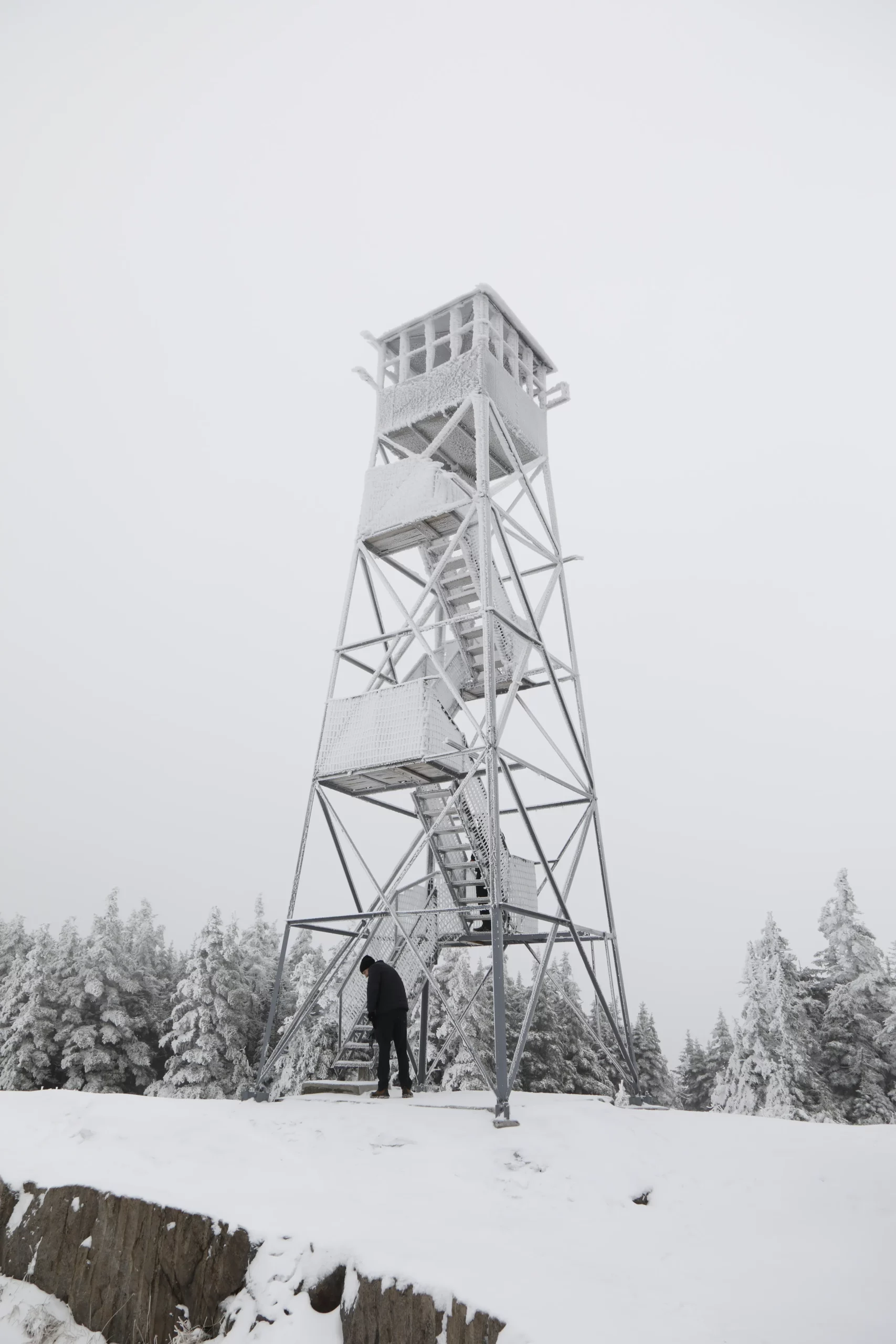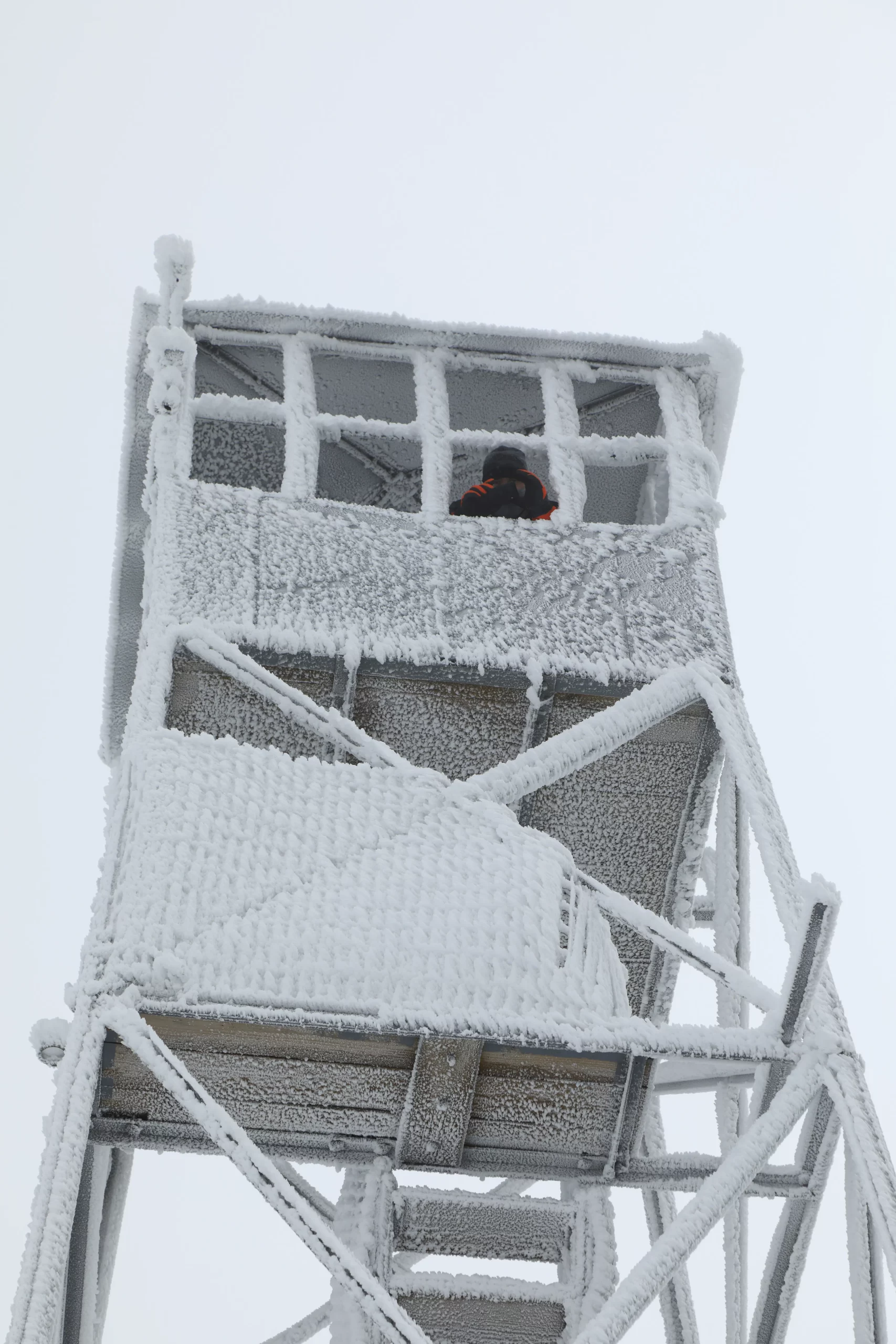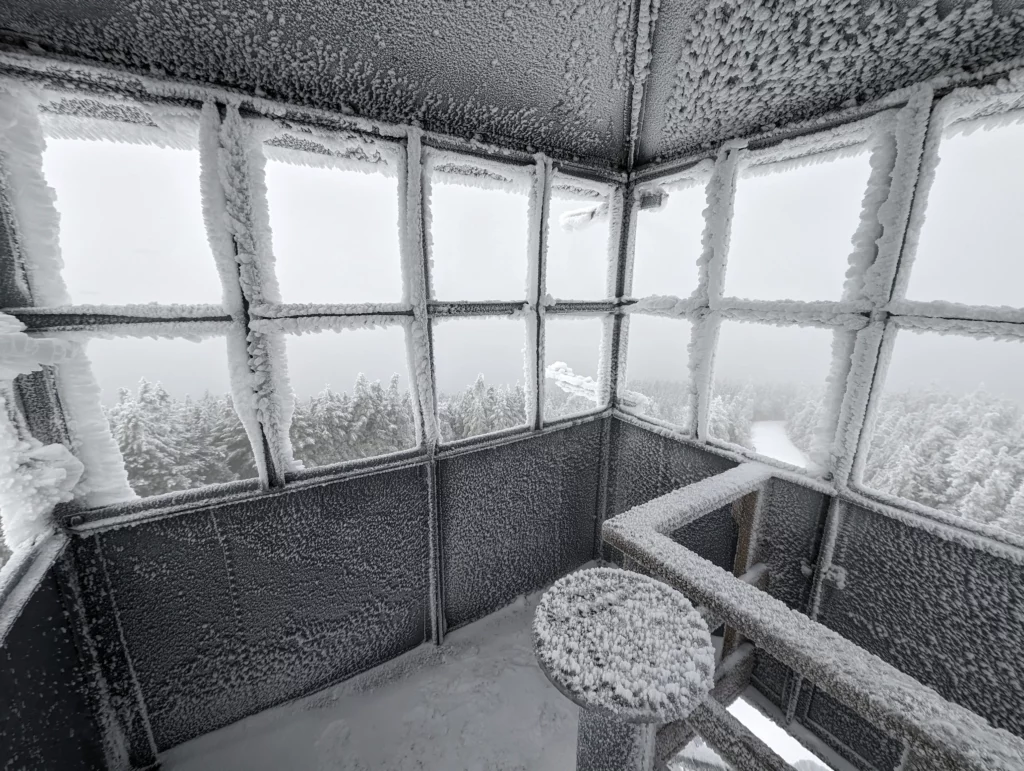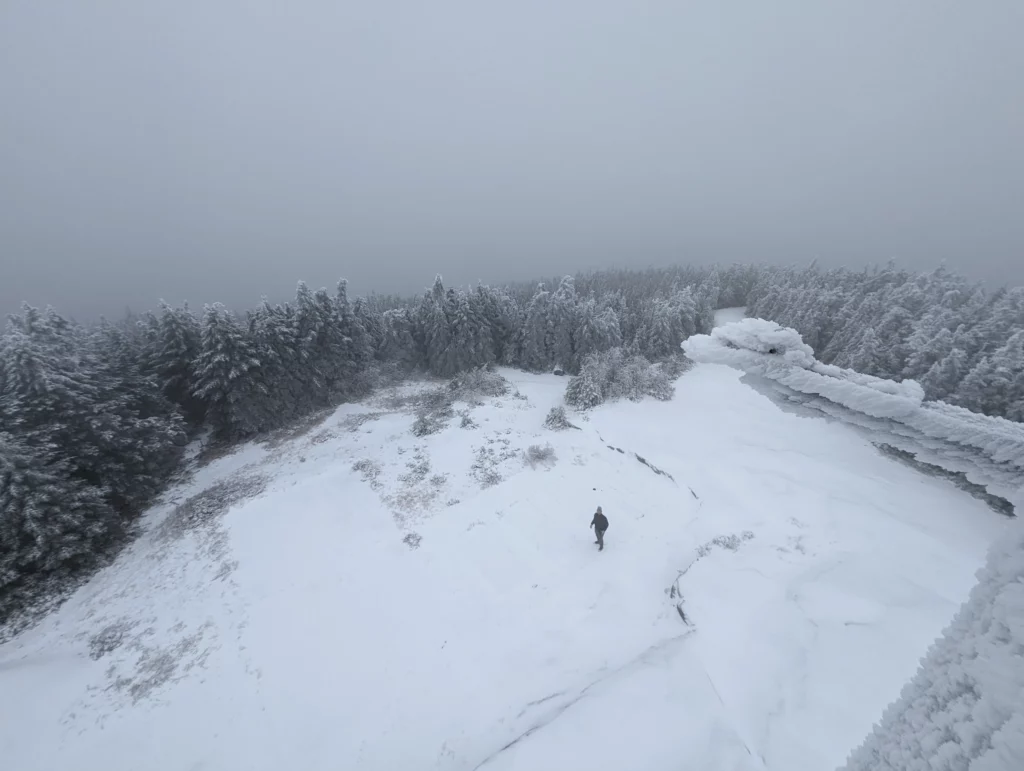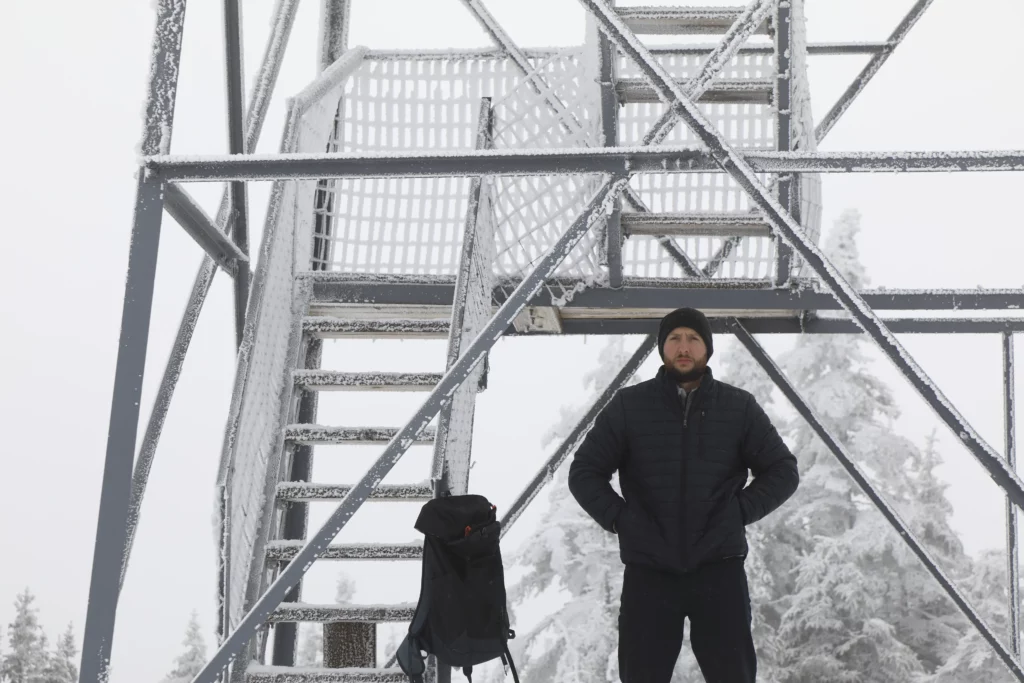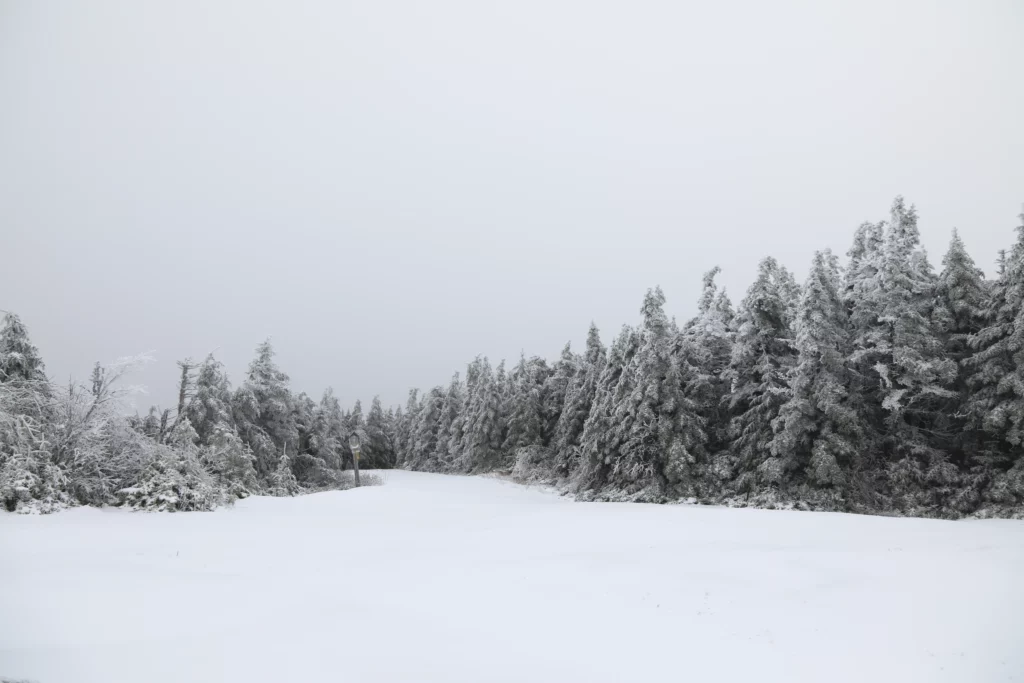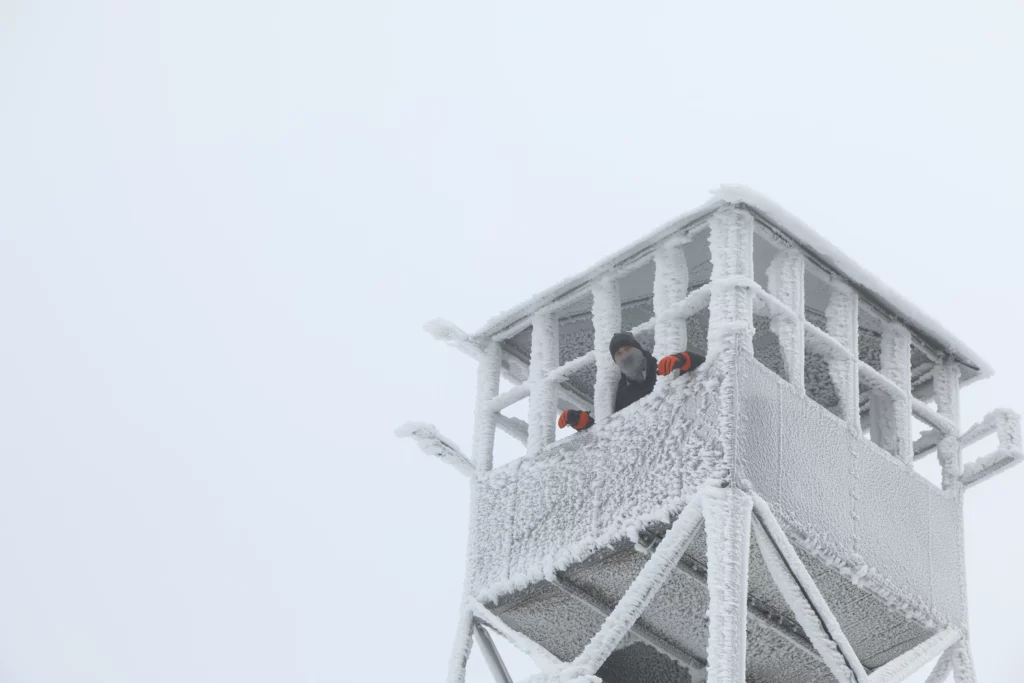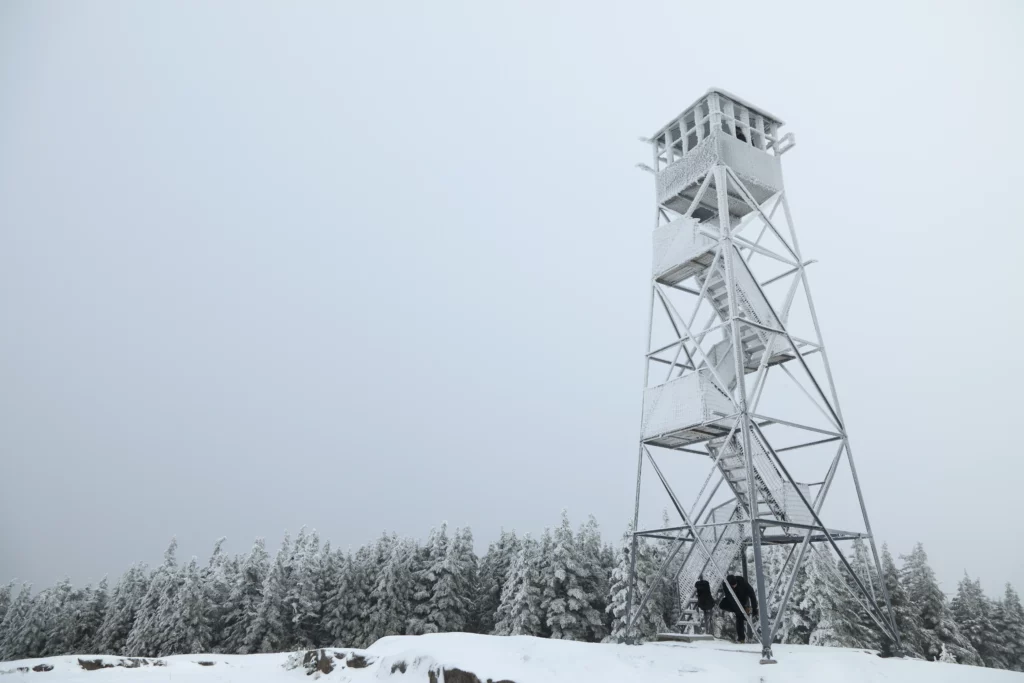Blue Mountain - 3,759'
Blue Mountain is likely a contender for being in the “top half” of the Adirondack Fire Towers, although I’m not entirely confident about its placement, since we got stonewalled by a white out on the peak. It’s certainly no Poke-O or Hurricane, but it’s pretty alright, and I imagine the view is generally better than what we got.
The climb itself is relatively short, a little over 4 miles in total according to the trusty Garmin Watch, but the elevation gain is actually pretty impressive for a Fire Tower. This one is not as “easy” as a lot of the other Fire Towers, so make sure you’re ready for a decent amount of leg work.
We went for this one in Mid-November and, as luck would have it, got a nice whiteout up on the peak. I’ve heard good things about this view but we didn’t really have that when we arrived. Things were (as you can see in the images) already quite icy, which means having spikes was incredibly helpful. We air on the side of: Starting in Mid-October it’s a good idea to start carrying spikes everywhere, just in case.
- There is a fairly large parking area basically just for this climb, I imagine it’s unlikely that you’ll need to compete for spots if you get there before 10:00AM.
- The elevation here starts off pretty mild but gains quickly, be ready for a good workout.
- This is a big peak with a lot of open space, but the outer perimeter of the peak is all wooded, you’re going to need to climb up the Fire Tower at least a little to get any good views.
*this excerpt was salvaged from the now defunct www.nysforestrangers.com, thanks to the Way Back Machine, written by Captain Paul T Hartmann (ret.)*
LOCATION: Northeast of the Hamlet of Blue Mt. Lake.
STATUS: Remains, has been restored and is open to the public.
The first structure on Blue Mt was a wooden tower, about 30′ in height, constructed by the Conservation Commission in September 1911. In 1917, the Conservation Commission replaced the wooden tower with a 35′ Aermotor LS40 tower.
Blue was operational for 80 years and one of the longest operating towers in the State, second only to St. Regis which operated continuously for 81. During all those years there were four different cabins provided for the observer. The first was a log structure and the other three were of frame construction.
In the 1950’s, as the “Cold War” raged and the threat of nuclear annihilation was a serious concern. The USAF had developed a long range radar system to protect against enemy bombers. In addition, they developed and deployed what where known as gap-filler radar stations. Having a range of around sixty-five miles, these radar installations were placed in areas where it was thought enemy aircraft could fly low to avoid detection by the longer-range radars of the permanent and mobile radar networks. One such gap-filler radio station was installed on the summit of Blue Mountain. The station became operational in January of 1959 and was decommissioned in December 1967.
Blue Mt was closed in 1990 and was one of the last operating fire towers in New York State. The tower appears on the National Historic Lookout Register and the National Register of Historic Places..
In 1992, the Blue Mt tower and cabin were seriously vandalized by unknown individuals. This occurred about the same time Pharaoh was toppled and some believe it may have been done by the same people.
Blue Mt has been adopted and restored by local volunteers and is one of the mountains included in the Fire Tower Challenge sponsored by the Glens Falls-Saratoga Chapter of the Adirondack Mountain Club (ADK). “To complete the Challenge and receive the official full-color patch, hikers must climb and document, by date, ascents of at least 23 fire tower summits: 18 of 23 Adirondack Park summits and all 5 Catskill Park summits.”
We Give This Trail: 6/10
Ratings are subjective: considers trail conditions, difficulty, views and other notable or unique characteristics

